Spinulose wood fern
(Dryopteris carthusiana)
Conservation • Wetland • Description • Habitat • Ecology • Use • Distribution • Taxonomy
Description |
||
Spinulose wood fern is a relatively large, delicate, perennial fern that rises from a short-creeping rhizome and fibrous roots. The rhizome is thick, coarse, erect, and scaly. It often forms clumps. Sterile and fertile fronds are similar in appearance. The fronds are erect, arching, 6″ to 30″ long, 4″ to 12″ wide, and lacy in appearance. They are about 2 times longer than wide, and most are at least 16″ long. They are deciduous, dying back in the winter. The leaf stem (stipe) is stout and 2″ to 12″ long, ¼ to ⅓ the length of the leafy portion (blade). Near the base it is densely covered with tan, chaffy scales. There are scattered scales on the middle and upper portions. The blade is narrowly oval to narrowly triangular, and often light green to yellowish-green. It is pinnately divided into 10 to 15 pairs of leaflets (pinnae). The blade is about the same width from the base to the middle. The upper half tapers to a point with concave sides along the tip. The lowest pair of pinna are not angled downward. The central axis of the blade (rachis) is pale green. It does not have glandular hairs. The pinnae are oblong lance-shaped, short stalked or stalkless, and taper to a narrow point with concave sides along the tip. They are deeply, pinnately divided. They are often angled upward and are arranged more or less parallel to the plane of the blade. The lowest pair of pinnae are lance shaped to elongated triangular, narrowing rapidly from the base, and are often slightly shorter than the adjacent pair. The pinnules are lobed. The basal pair of pinnules, closest to the rachis, is the longest and is deeply lobed, cut up to halfway or more to the midrib (costule). They become smaller and less deeply cut as they ascend the costa. The inner pinnule of the lowest pair, the one pointing toward the base, is longer than the opposing one, the one pointing toward the apex. The veins visible on the underside are forked. They are free, meaning they do not rejoin. They do not extend all the way to the margin of the pinnule. The margins are finely toothed. The teeth have a spiny tip that often curves toward the tip of the pinnule. The rachis, costa, and costule have a V-shaped groove on the top. The groove of the costule connects with the groove of the costa, which connects to the groove of the rachis, which connects to the groove of the stipe. The reproductive structures are born on the underside of the pinnules. There are numerous, round clusters (sora) of spore-bearing cases (sporangia) arranged on each side of the midrib halfway between the midrib and the margin. It is covered with a protective veil (indusium). The indusium is kidney-shaped, clearly visible, and attached to the pinnule at the inner curve. There are no glands on the indusium. |
||
Height |
||
Fronds 6″ to 30″ long |
||
Similar Species |
||
Common wood fern (Dryopteris intermedia) is evergreen—the fronds remain green throughout winter. It has gland-tipped hairs on the rachis, costa, and indusia. The lower pinnule closest to the midrib is shorter than the one adjacent to it on the same side. On the basal pinnae the lower pinnule closest to the midrib is longer but less than twice as long as the one opposite to it. The ultimate segments (pinnule lobes) are more deeply dissected, appearing lacy. It is much rarer in Minnesota, occurring only in the easternmost counties. |
||
Habitat |
||
Moist to wet. Swamps, woods, streambanks. |
||
Ecology |
||
Sporulation |
||
July to September |
||
Pests and Diseases |
||
|
||
Use |
||
|
||
Distribution |
||||
|
Sources |
|||
| 3/23/2023 | ||||
Nativity |
||||
Native |
||||
Occurrence |
||||
Common |
||||
Taxonomy |
|||
| Kingdom | Plantae (Plants) | ||
| Subkingdom | Pteridobiotina | ||
| Phylum | Tracheophyta (Vascular Plants) | ||
| Subdivision | Polypodiophytina | ||
| Class | Polypodiopsida (ferns) | ||
| Subclass | Polypodiidae (leptosporangiate ferns) | ||
Order |
Polypodiales | ||
| Suborder | Polypodiineae (eupolypods I) | ||
Family |
Dryopteridaceae (shieldfern) | ||
Subfamily |
Dryopteridoideae | ||
Genus |
Dryopteris (wood ferns) | ||
Subordinate Taxa |
|||
|
|||
Synonyms |
|||
Dryopteris austriaca var. spinulosa Dryopteris spinulosa |
|||
Common Names |
|||
narrow buckler fern (UK) spinulose shield fern spinulose wood fern spinulose woodfern toothed wood fern |
|||
Glossary
Costa
The central axis of a pinna, to which pinnules are attached.
Costule
The midrib of a pinnule.
Frond
A large leaf with many divisions: in ferns, the compound leaf, including the stipe and the blade; in mosses, a closely and regularly branched stem resembling a fern leaf; in lichens, a stalkless, leaf-like extension.
Indusium
Undergarment. In ferns: A veil covering the cluster (sorus) of spore-producing structures (sporangia). In fungi: A skirt-like structure hanging from the cap (receptacle) of a stinkhorn.
Pinna
The primary division of a compound leaf or fern frond.
Pinnate
On a compound leaf, having the leaflets arranged on opposite sides of a common stalk. On a bryophyte, having branches evenly arranged on opposite sides of a stem.
Pinnule
The ultimate segment (individual leaflets) of a twice or more compound leaf or fern frond.
Rachis
The main axis of a compound leaf, appearing as an extension of the leaf stalk; the main axis of an inflorescence.
Rhizome
A horizontal, usually underground stem. It serves as a reproductive structure, producing roots below and shoots above at the nodes.
Sorus
A compact cluster of spore-bearing cases or sacs (sporangia) on a fern.
Sporangium
A spore bearing structure, as of a fern or moss.
Stipe
A supporting stalk-like structure lacking vascular tissue: in fungi, the stalk supporting the mushroom cap; in ferns, the stalk connecting the blade to the rhizome; in flowering plants, the stalk connecting the flower’s ovary to the receptacle; in orchids; the band connecting the pollina with the viscidium.
Visitor Photos |
|||||
Share your photo of this plant. |
|||||
| This button not working for you? Simply email us at info@MinnesotaSeasons.com. Attach one or more photos and, if you like, a caption. |
|||||
Luciearl |
|||||
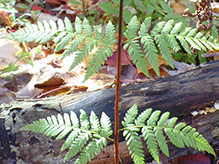 |
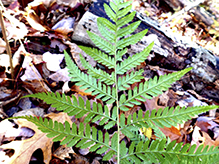 |
||||
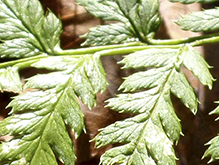 |
|||||
Robert Briggs |
|||||
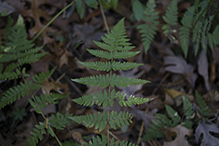 |
|||||
MinnesotaSeasons.com Photos |
|||||
Frond |
|||||
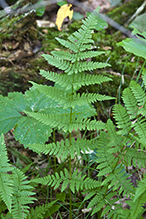 |
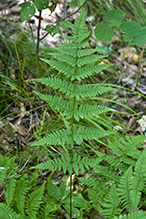 |
||||
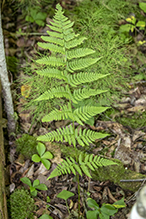 |
|||||
Stipe |
|||||
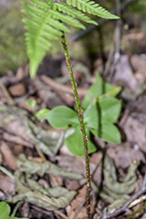 |
|||||
Pinnae |
|||||
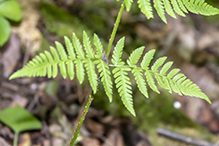 |
|||||
Pinnules |
|||||
 |
|||||

Slideshows |
||
| Щитовник шартрский - Dryopteris carthusiana. Лекарственные растения. |
||
About
Published on Apr 1, 2015 Энциклопедический словарь. Google Translation: Encyclopedic Dictionary. |
||

Visitor Videos |
|||
Share your video of this plant. |
|||
| This button not working for you? Simply email us at info@MinnesotaSeasons.com. Attach a video, a YouTube link, or a cloud storage link. |
|||
Other Videos |
|||
| F05 Dryopteris carthusiana Séquence 5-Fougères 1.m4v Jean Désorcy |
|||
About
Uploaded on Jan 10, 2010 La Dryoptéride spinuleuse du printemps à l'automne. Spinulose Shield Fern from spring to fall. Helecho Dryopteris carthusiana de la primavera hasta el otoño. |
|||

Visitor Sightings |
|||||
Report a sighting of this plant. |
|||||
| This button not working for you? Simply email us at info@MinnesotaSeasons.com. Be sure to include a location. |
|||||
| Luciearl 10/25/2019 |
Location: Fairview Twp, Cass County |
 |
|||
| Robert Briggs 10/20/2016 |
Location: Afton State park, Southern River Trail |
 |
|||
MinnesotaSeasons.com Sightings |
|||||

|
Created: Last Updated: © MinnesotaSeasons.com. All rights reserved. |




